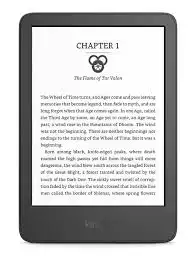
In recent years, the aviation industry has made significant strides in enhancing passenger connectivity, leading to the introduction of in-flight WiFi services. This technology allows travelers to remain connected to the internet while soaring at thousands of feet above the ground. However, the quality and availability of in-flight WiFi can vary widely depending on the airline, aircraft, and even the flight route. Numerous airlines have begun to equip their fleets with advanced WiFi systems, enabling cabin guests to browse the internet, send emails, and even stream videos. The question arises: what are the options for staying connected during your flight? In-flight WiFi primarily operates through two systems: air-to-ground and satellite. Can You Stay Connected While Flying with WiFi on Airplanes?
Understanding In-Flight WiFi
The Technology Behind In-Flight WiFi
Availability of In-Flight WiFi
While most major airlines now offer WiFi on select flights, it is important to check the specific airline's website or app prior to travel. Not all aircraft within an airline's fleet may be equipped with WiFi. Additionally, WiFi availability can also depend on flight duration and specific routes. Some low-cost carriers might not provide WiFi services at all, while others might offer it only for certain domestic or international flights. To avoid surprises, passengers should always verify in-flight connectivity options when booking their tickets.
Usage Policies and Costs
Policies regarding in-flight WiFi usage vary between airlines. While some allow free access, most will require passengers to pay for the service. Costs can range from a few dollars for basic access to upwards of twenty dollars for faster speeds or unlimited access during the flight. Additionally, usage policies might limit access to specific websites or applications to preserve bandwidth for all passengers. Before engaging in any online activities, it is advisable to review the airline's specific terms and conditions regarding in-flight WiFi usage.
The Experience of Using WiFi on Airplanes
Connecting to In-Flight WiFi
Upon boarding the aircraft, passengers should look for any announcements regarding the in-flight WiFi service. Most airlines will provide instructions on how to connect, typically involving selecting the airline's WiFi network on your device and following onscreen prompts.
Challenges of In-Flight WiFi
While in-flight WiFi significantly enhances the flying experience by keeping travelers connected, it is important to note some common challenges.
Best Practices for Using WiFi on Flights
To ensure a seamless and efficient in-flight WiFi experience, consider adopting the following practices:
Future Innovations in In-Flight Connectivity
The future of in-flight WiFi looks promising as technological advancements continue to evolve.
FAQ
Is in-flight WiFi available on all airlines?
No, in-flight WiFi is not available on all airlines. Most major airlines now offer it on select flights, but some low-cost carriers may not provide this service at all. It is advisable to check with your specific airline before traveling.
How much does in-flight WiFi typically cost?
The cost of in-flight WiFi varies depending on the airline and the service package selected. Basic access may cost a few dollars, while unlimited access could range up to twenty dollars or more, depending on the speed offered.